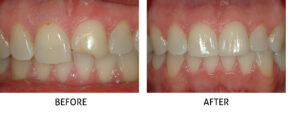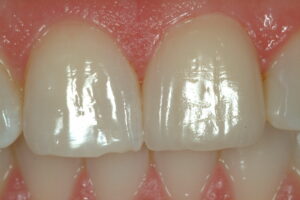A SINGLE VENEER AND BONDED FILLING
CASE STUDY—Shane H.
Shane had broken his upper left central incisor as a child and his previous dentist had repaired the broken tooth by bonding tooth-matching filling material to the tooth (a “composite filling”). This lasted many years but in 2007 the bonded filling failed, leaving Shane again with a broken tooth. If the original composite de-bonded, a new composite would likely de-bond as well. Shane asked me if there was another option that would offer a longer life span. I recommended a tooth restoration referred to as a “porcelain veneer.” This type of restoration is ultra-thin and bonds to a large surface area of enamel, creating a high bond-strength between the porcelain and the tooth. The adjacent central incisor had a cavity (decay) along the gumline, which Shane wanted fixed; this can be seen in the photo below as a small brown area next to the gum. A composite filling was planned to repair this minor blemish along the gumline of the tooth.
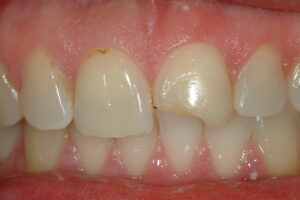
INITIAL CONDITION
Before starting the veneer procedure, a mock-up of the desired tooth shape was prepared. This preliminary step is called a “diagnostic wax-up” and is done by adding wax to a plaster model of the patient’s teeth. The wax is melted onto the model and then sculped into the desired shape of the tooth. The purpose of this step is to aid in the fabrication of a “provisional restoration”—a short-term restoration placed on the tooth at the first clinical visit while the porcelain veneer is being made in a dental lab.
A veneer is a two-appointment procedure. On the first appointment, the tooth is shaped to accept the porcelain veneer. This involves removing a thin (about ½-1mm) layer of enamel. After it is shaped, a teeth-mold is made, which is then sent to a dental laboratory for fabrication of the porcelain veneer.
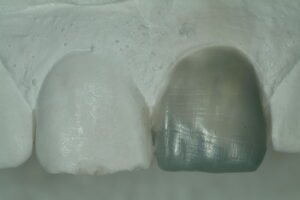
DIAGNOSTIC WAX-UP
At the end of this appointment, a temporary veneer is made for the tooth, which is worn during the two-week period of time while the lab is making the porcelain veneer. The temporary veneer is made out of a tooth-matching plastic material and the veneer is cemented to the tooth with a weak glue that makes removal of the temporary veneer easy. Having the temporary veneer easy to remove also makes it easy for the patient to accidentally dislodge in the interim period between the first and second appointments. We give clear instructions on how to avoid this inconvenience. The provisional restoration is a facsimile of the desired final restoration, which is made out of a durable and esthetic ceramic, rather than tooth-colored plastic. This protects the tooth and gives the patient a nice smile while the permanent porcelain restoration is made in the dental laboratory.
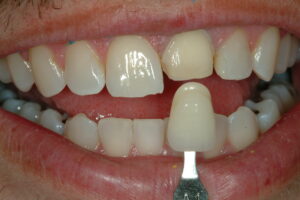
TOOTH PREPARATION AND SHADE MATCHING
After a two-week period, the patient returns to the office to have the provisional restoration removed and the permanent restoration placed. The first step is to remove the provisional restoration and “try-in” the veneer to make sure it fits the tooth properly and the color matches the natural tooth. If changes are desired, the permanent restoration is returned to the lab and the provisional is cemented back onto the tooth. Changes to the restoration are rarely needed.
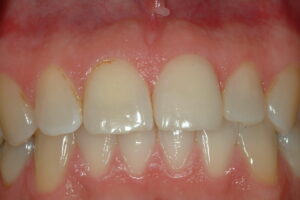
PROVISIONAL RESTORATION
If the fit and esthetics are acceptable, the tooth is cleaned and the bonding of the porcelain veneer to the tooth is carried out. This bonding procedure has several steps, and when done with extreme care, provides a bond nearly as strong as the original tooth.
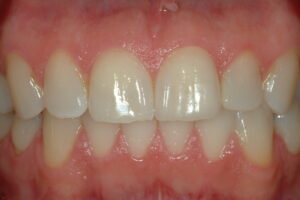
CLOSE-UP OF FINAL RESTORATION

